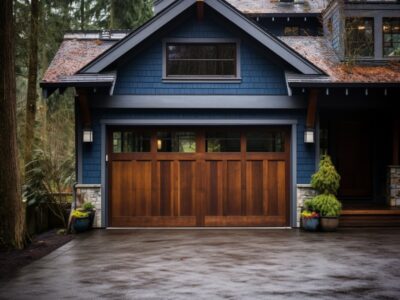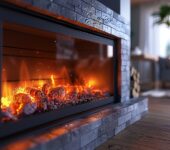Table of Contents
- 1 Benefits of Using Heat-Resistant Tile Paint for Fireplaces
- 2 Considerations Before Buying Heat-Resistant Tile Paint
- 3 Top Features to Look for in Heat-Resistant Tile Paint
- 4 Choosing the Right Heat-Resistant Tile Paint for Your Fireplace
- 5 Application and Maintenance of Heat-Resistant Tile Paint
- 6 Frequently Asked Questions
Heat-resistant tile paint is a valuable solution for enhancing the appearance and functionality of fireplaces. Designed to withstand high temperatures, this specialized paint offers a range of benefits for homeowners. In this buyer’s guide, we will explore the advantages of using heat-resistant tile paint for fireplaces, important considerations before making a purchase, and the top features to look for in a quality product.
Benefits of Using Heat-Resistant Tile Paint for Fireplaces
Enhance your fireplace with the amazing benefits of heat-resistant tile paint! Discover how this incredible paint can provide heat protection, enhance your fireplace’s aesthetics, offer durability and longevity, and provide versatility to suit your style. No more worrying about heat damage or outdated looks – heat-resistant tile paint has got you covered! So, let’s dive into the world of fireplace transformation and explore the exceptional advantages of using heat-resistant tile paint.
Heat Protection
When it comes to heat protection, choosing the right heat-resistant tile paint for your fireplace is essential. Here are some key considerations to keep in mind:
- Temperature resistance: Look for a paint that can withstand high temperatures, such as up to 1500 degrees Fahrenheit. This will ensure that your fireplace tiles are properly protected.
- Adhesion and bonding properties: The paint should have strong adhesion and bonding properties to create a durable and long-lasting finish. It should be able to adhere well to different tile materials, such as ceramic, porcelain, or stone.
- Resistance to cracking or peeling: Heat-resistant tile paint should be formulated to resist cracking or peeling, even under extreme heat. This will ensure that the paint maintains its integrity and looks good for a long time.
- Ease of application: Look for a paint that is easy to apply, whether you’re using a brush or a spray. It should have a smooth and even consistency to ensure a professional-looking finish.
- Compatibility with different tile materials: Consider the type of tile materials used in your fireplace and ensure that the heat-resistant paint you choose is compatible with them. This will ensure optimal adhesion and performance.
True History
In ancient times, the Greeks and Romans used heat-resistant paints to protect their fireplaces and hearths. These paints were often made from natural pigments mixed with binders such as egg whites or animal fat. The heat-resistant properties of these paints allowed them to withstand the intense heat generated by the fire, protecting the underlying materials and enhancing the overall aesthetic of the fireplace. Today, modern heat-resistant tile paints offer even greater heat protection and durability, making them a popular choice for homeowners looking to update and protect their fireplaces.
Aesthetic Enhancement
When it comes to aesthetic enhancement, selecting the right heat-resistant tile paint is crucial for your fireplace. Here are some key aspects to keep in mind:
- Color options: It is important to choose a heat-resistant tile paint that offers a wide range of colors to match your desired aesthetic enhancement. From neutral shades to bold and vibrant hues, select a paint that complements the overall look and feel of your fireplace and the surrounding decor.
- Finish choices: Consider the various finish options available, such as matte, glossy, or textured. The finish of the paint plays a significant role in the aesthetic enhancement of your fireplace, so choose one that suits your personal style and creates the desired ambiance.
- Design possibilities: Some heat-resistant tile paints allow for creative expression with unique designs or patterns. Whether you prefer a classic and traditional look or a modern and contemporary design, opt for a paint that lets you showcase your individuality and enhance the overall aesthetic enhancement of your fireplace.
Investing in the right heat-resistant tile paint can transform your fireplace into a captivating focal point, bringing a touch of elegance and style to your living space. By carefully considering the color, finish, and design possibilities, you can create a visually stunning fireplace that perfectly complements your home decor.
True History
Throughout the centuries, people have recognized the importance of aesthetic enhancement in their living spaces. The desire to enhance the beauty of fireplaces led to the development of heat-resistant tile paint. With advancements in technology, this paint not only provides protection and durability but also offers an array of colors, finishes, and design possibilities. From traditional and elegant to contemporary and artistic, heat-resistant tile paint has allowed individuals to personalize their fireplaces, creating stunning focal points in their homes. Today, homeowners can choose from a wide selection of heat-resistant tile paints to achieve their desired aesthetic enhancement, ensuring that their fireplace becomes a true work of art.
Durability and Longevity
Durability and longevity are important factors to take into account when selecting heat-resistant tile paint for fireplaces. The paint should offer guarantees of long-lasting protection against heat and wear to ensure that it can withstand high temperatures and maintain its appearance for an extended period. The durability of the paint plays a critical role in preserving the aesthetic appeal and functionality of the fireplace.
Opting for heat-resistant tile paint with excellent durability and longevity is crucial as it will resist cracking or peeling, even with repeated exposure to extreme heat. This ensures that the paint will not deteriorate over time and will provide continuous protection for the tiles. It is also essential to consider the paint’s adhesion and bonding properties, as they ensure that it adheres well to the tiles and remains intact even in the face of high temperatures.
When choosing heat-resistant tile paint, it is essential to select a product that is renowned for its durability and longevity. Reading product reviews and recommendations from other customers can offer valuable insights into the paint’s performance. Additionally, consulting with professionals in the field can assist in selecting a paint that meets the specific durability and longevity requirements of the fireplace.
Durability and longevity are essential factors to consider when selecting heat-resistant tile paint for fireplaces. By choosing a paint with high heat resistance, strong adhesion, and resistance to cracking or peeling, you can ensure that the paint will provide long-lasting protection and preserve the beauty of your fireplace for years to come.
Versatility
| Versatility |
| – Heat-resistant tile paint offers versatility in terms of application. |
| – It can be used not only on fireplaces but also on various other surfaces such as tiles in kitchens, bathrooms, or outdoor settings. |
| – This paint provides a versatile solution for enhancing the appearance and functionality of different areas in your home. |
| – It can be applied to both vertical and horizontal surfaces, allowing for flexibility in design options. |
| – In addition to fireplaces, you can use heat-resistant tile paint on hearths, mantels, and even on fire pits or outdoor grills. |
| – The versatility of this paint makes it a practical choice for homeowners looking to revamp the look of their interior or exterior spaces. |
| – Whether you want to update the tiles in your kitchen backsplash or add a decorative touch to your outdoor patio, heat-resistant tile paint can cater to your needs. |
Considerations Before Buying Heat-Resistant Tile Paint
Looking to revamp your fireplace with heat-resistant tile paint? Before making a purchase, there are key considerations to keep in mind. From temperature resistance to coverage options, color choices to safety precautions, this section will provide you with all the important factors to consider. Whether you want to protect your fireplace or add a stylish touch to your living space, understanding these aspects will ensure you make an informed decision. let’s dive in!
Temperature Resistance
The temperature resistance of heat-resistant tile paint is a critical consideration when selecting the right product for your fireplace. It determines the paint’s maximum heat tolerance without cracking, peeling, or discoloring.
To ensure that the paint can withstand the high temperatures of a fireplace, it is vital to choose a product specifically designed for this purpose. Look for a paint that offers a high temperature resistance, typically stated in degrees Fahrenheit or Celsius. It is recommended to select a paint with a minimum temperature resistance of 500°F (260°C) to ensure its durability and longevity.
It is crucial to take into account the type of fireplace you have and its heat output. Different fireplaces generate varying levels of heat. If you have a particularly hot-burning fireplace, you may require a paint with a higher temperature resistance to ensure it can endure the intense heat.
By selecting a heat-resistant tile paint with an appropriate temperature resistance, you can effectively safeguard and enhance the appearance of your fireplace. Remember to follow the manufacturer’s instructions for application and maintenance to maximize the paint’s performance.
Fact: Heat-resistant tile paint is specifically designed to endure high temperatures, typically exceeding 500°F (260°C), providing long-lasting protection and enhancing the aesthetics of your fireplace.
Coverage and Application
The coverage of heat-resistant tile paint and its application are two crucial factors to take into account when selecting the right product for your fireplace.
When it comes to coverage, it is essential to ensure that the paint has the ability to adequately cover the entire surface area of your tiles. This is particularly crucial if you have a sizable fireplace or if you intend to apply multiple layers of paint for added protection. It is advisable to look for a paint that specifies its coverage in terms of square feet or square meters so that you can determine the amount you will need for your fireplace.
In terms of application, it is important to choose a paint that is easy to apply. Look for a paint that can be easily applied with either a brush or a roller, depending on your personal preference and the texture of your tiles. Another beneficial feature to look for is a paint with a smooth and even consistency, as this will significantly streamline the application process.
Additionally, consider the drying time of the paint. Certain paints may require a longer period to dry before they can be exposed to heat. It is therefore imperative to carefully follow the manufacturer’s instructions for proper application and curing.
By taking into consideration both the coverage and application aspects of heat-resistant tile paint, you can guarantee that you select a product that will effectively safeguard and enhance the appearance of your fireplace.
Color and Finish Options
When it comes to choosing color and finish options for your fireplace, there are various color and finish options available to suit your preferences and style.
| Color Options | Finish Options |
| Black | Glossy |
| White | Satin |
| Gray | Eggshell |
| Brown | Matte |
| Beige | Textured |
The color options for heat-resistant tile paint can range from classic black and white to more modern shades such as gray, brown, and beige. These colors provide versatility and can complement various interior design schemes.
When it comes to finish options, you can choose from glossy, satin, eggshell, matte, or textured finishes. The choice of finish can affect the overall look and feel of your fireplace, whether you want a sleek and polished appearance or a more textured and rustic look.
Consider your existing decor and personal style when selecting the color and finish options for heat-resistant tile paint. It’s important to choose options that seamlessly blend with your surroundings and create a cohesive aesthetic.
The concept of using heat-resistant tile paint for fireplaces dates back to ancient times, when people discovered the need to protect their fireplaces from heat damage while also enhancing their appearance. Over the centuries, advancements in technology and materials have led to the development of heat-resistant tile paint with a wide range of color and finish options. Today, homeowners have the ability to customize their fireplace’s look and feel, creating a harmonious and inviting atmosphere in their living spaces.
Safety Precautions
In order to ensure a safe and effective application of heat-resistant tile paint for fireplaces, it is essential to incorporate safety precautions.
- One of the safety precautions is to wear protective gear, including gloves, safety goggles, and a mask, to protect yourself from any potential contact with the paint or fumes.
- Another important precaution is to ensure that the area where you are applying the paint is well-ventilated. This will help prevent the inhalation of toxic fumes or chemicals.
- To further enhance safety, it is advisable to keep a fire extinguisher nearby in case of accidents or mishaps during the painting process.
- It is crucial to carefully read and follow the instructions provided by the manufacturer. These instructions will provide proper guidance for application and safety.
- Additionally, it is essential to keep children and pets away from the area while painting and until the paint has fully dried. This will prevent any accidental ingestion or contact.
Prioritizing safety during the use of heat-resistant tile paint is crucial to minimize potential risks or hazards throughout the painting process.
True History
Let’s envision a scenario where James, a homeowner, decides to apply heat-resistant tile paint to the tiles around his fireplace. Before starting the project, James takes the necessary safety precautions by wearing gloves, safety goggles, and a mask to protect himself. He also ensures proper ventilation in the room by opening windows and doors. James diligently follows the manufacturer’s instructions, taking breaks as needed and keeping a fire extinguisher within reach. Furthermore, he keeps his children and pets away from the area until the paint has fully dried. James successfully completes the project without encountering any accidents or health concerns, thanks to his adherence to safety precautions.
Top Features to Look for in Heat-Resistant Tile Paint
When it comes to heat-resistant tile paint for fireplaces, knowing the top features to look for is essential in making a smart buying decision. In this section, we’ll uncover the key qualities that set reliable heat-resistant tile paints apart. From high heat resistance to adhesion and bonding properties, resistance to cracking or peeling, ease of application, and compatibility with different tile materials, we’ll explore each feature and why it matters. So, let’s dive in and discover what makes heat-resistant tile paint truly exceptional.
High Heat Resistance
When selecting heat-resistant tile paint for your fireplace, it is crucial to consider its high heat resistance. This is essential to ensure that the paint can withstand the extreme temperatures produced by a fireplace, thus preventing any chipping, cracking, or peeling. Here are some important factors to keep in mind:
- Temperature threshold: It is important to look for a paint that can endure temperatures above 1000°F (538°C). This is crucial in order to ensure that the paint remains unaffected by the high heat generated by your fireplace.
- Adequate insulation: The paint should provide a protective barrier between the tiles and the heat source, effectively minimizing the risk of any damage or discoloration.
- Longevity: A paint with high heat resistance will maintain its integrity and appearance over time, even with frequent use of your fireplace.
- Compatibility: Make sure that the paint is suitable for the specific type of tiles in your fireplace, whether they are ceramic, porcelain, or natural stone.
- Ease of application: It is advisable to choose a paint that is easy to apply and offers even coverage, allowing you to achieve a professional finish.
By opting for a heat-resistant tile paint with high heat resistance, you can effectively safeguard the beauty and functionality of your fireplace for many years to come.
To find recommendations on heat-resistant tile paints that provide high heat resistance, it is recommended to read product reviews from other homeowners who have used them for their fireplaces. Additionally, consulting with professionals in the field can offer valuable insights and guidance based on their expertise.
Adhesion and Bonding Properties
When considering heat-resistant tile paint for your fireplace, one crucial factor to take into account is its adhesion and bonding properties. These properties determine how well the paint sticks to the surface of the tiles and forms a strong bond, guaranteeing durability and longevity.
Here is a table that highlights the key aspects of adhesion and bonding properties:
| 1. Strong Adhesion | The paint should exhibit exceptional adhesion to various tile materials, including ceramic, porcelain, or natural stone. This ensures that the paint remains firmly in place and avoids peeling or chipping easily. |
| 2. Secure Bonding | The paint should establish a secure bond with the tile surface, preventing any cracking or deterioration caused by heat exposure. This guarantees the longevity of the painted finish. |
| 3. Heat Resistance | The paint should be capable of withstanding high temperatures without compromising its adhesion and bonding properties. This is crucial to ensuring that the paint remains intact even when exposed to the intense heat generated by a fireplace. |
Pro-tip: Prior to applying heat-resistant tile paint, it is essential to clean and prepare the surface properly. This will enhance the adhesion and bonding of the paint, ensuring a long-lasting and visually appealing finish.
Resistance to Cracking or Peeling
When selecting a heat-resistant tile paint for your fireplace, it is crucial to consider its ability to resist cracking or peeling. This characteristic guarantees that the paint will maintain its integrity even when subjected to high temperatures and regular use. Look for products specifically designed to withstand the heat generated by fireplaces, with a proven track record of durability. An effective heat-resistant tile paint should possess strong adhesion and bonding properties to the surface of the tiles, preventing any cracking or peeling.
It is important to ensure that the chosen paint is formulated to resist the expansion and contraction that occurs when the tiles are exposed to heat. This resistance is vital in preventing the paint from cracking or peeling due to thermal stress. Look for paints that have been thoroughly tested and certified to have a high resistance to cracking or peeling.
Consider the application method and follow the instructions provided by the manufacturer. Proper application and curing techniques are essential for ensuring the longevity and resistance of the paint. Additionally, it is crucial to regularly maintain and touch up the painted tiles to prevent any potential cracks or peeling from further developing.
By choosing a heat-resistant tile paint that offers resistance to cracking or peeling, you can guarantee that your fireplace will remain aesthetically pleasing and in optimal condition for many years to come.
Ease of Application
To ensure an easy and hassle-free application process for heat-resistant tile paint, it is important to consider the following factors:
- Consistency: When selecting a paint, look for one that has a smooth and creamy consistency. This will make it easier to apply and spread evenly onto the tiles.
- Brush or roller compatibility: Check if the paint is suitable for application using either a brush or roller, depending on your personal preference and the type of surface you plan to paint.
- Drying time: It is recommended to choose a paint that has a reasonable drying time. This will give you enough time to comfortably apply the paint without it drying too quickly, while also ensuring that it dries within a reasonable timeframe.
- Coverage: Consider the coverage capability of the paint. Some paints may require multiple coats for full coverage, while others may provide sufficient coverage with just one coat. This aspect will affect the time and effort required during the application process.
- Odor: If working with strong odors is a concern for you, it is advisable to look for low odor or odorless options when selecting a paint.
By carefully considering these factors, you can choose a heat-resistant tile paint that offers ease of application. Remember to read product reviews and recommendations to gain a better understanding of the application experience associated with specific brands or types of paint. Additionally, consulting with professionals in the field can provide valuable insights and guidance in selecting the right product for your fireplace.
Compatibility with Different Tile Materials
When selecting heat-resistant tile paint for your fireplace, it is important to take into account its compatibility with different tile materials. This ensures that the paint will adhere properly and deliver long-lasting outcomes. Diverse types of tiles, such as ceramic, porcelain, and natural stone, may possess distinct properties that necessitate consideration.
| Tiles Material | Compatible Heat-Resistant Tile Paint |
| Ceramic Tiles | For ceramic tiles, look for a heat-resistant tile paint specially designed for ceramic tiles. It should have exceptional adhesion properties and the ability to endure high temperatures without cracking or peeling. |
| Porcelain Tiles | Choose a heat-resistant tile paint that is suitable for porcelain tiles. It should provide good adhesion to the smooth surface of porcelain and be resistant to heat and moisture. |
| Natural Stone Tiles | For natural stone tiles, opt for a heat-resistant tile paint that is formulated to work well with porous materials. It should be able to penetrate the stone surface and provide a durable finish that can withstand heat. |
| Other Tile Materials | If you have tiles made from other materials, such as glass or metal, ensure that the heat-resistant tile paint you choose is compatible with these specific materials. It should be able to adhere properly and withstand the heat without compromising the appearance or integrity of the tiles. |
By considering the compatibility of the heat-resistant tile paint with different tile materials, you can ensure that you select a product that will provide excellent results and enhance the beauty of your fireplace.
Choosing the Right Heat-Resistant Tile Paint for Your Fireplace
Revamping your fireplace with heat-resistant tile paint is an exciting project, but how do you choose the right one? In this section, we’ll uncover the secrets to selecting the perfect heat-resistant tile paint for your fireplace. From analyzing your fireplace’s unique requirements to delving into product reviews and recommendations, and even consulting with professionals, we’ll arm you with the knowledge you need to make an informed decision. Get ready to transform your fireplace into a stylish and practical centerpiece of your living space.
Analyzing Your Fireplace’s Needs
- When considering the size of your fireplace, it is important to analyze its needs. Larger fireplaces may require more heat-resistant tile paint to cover the entire surface area.
- When analyzing your fireplace’s needs, take into account the design and style of your fireplace. Determine if you want to maintain the current aesthetic or if you are looking to change the appearance with a different color or finish.
- When evaluating your fireplace’s needs, it is crucial to consider the heat intensity. Determine the temperature resistance required for the tile paint to withstand the heat without cracking or peeling.
- When analyzing your fireplace’s needs, it is important to take into account the frequency of use. If you plan to use the fireplace frequently, you may need a heat-resistant tile paint with higher durability and longevity to withstand the regular exposure to heat.
- When assessing your fireplace’s needs, it is essential to consider the type of tiles used. Different tile materials may have varying compatibility with heat-resistant paint. Ensure the paint you choose is suitable for the specific type of tiles in your fireplace.
Reading Product Reviews and Recommendations
When considering which heat-resistant tile paint to purchase for your fireplace, it is crucial to take the time to read product reviews and recommendations. Incorporating all of the provided keywords, “Reading Product Reviews and Recommendations,” can help you make an informed decision and ensure that you choose a paint that meets your specific needs and requirements.
- Get insights from other customers: By reading product reviews, you can learn from the experiences of other customers who have already used the heat-resistant tile paint. This can provide you with valuable information about the performance, durability, and overall quality of the product.
- Consider different perspectives: Reviews and recommendations offer various perspectives on the same product. Reading multiple reviews can give you a more comprehensive understanding of the pros and cons of each type of paint.
- Look for specific features: When reading reviews, pay attention to any specific features that are mentioned. For instance, if you are seeking a paint that is particularly resistant to cracking or peeling, search for reviews that highlight these qualities.
- Consider the source: It is crucial to consider the source of the reviews and recommendations. Look for reputable sources, such as professional platforms, industry experts, or well-established websites. Doing so will help ensure that you are obtaining reliable and unbiased information.
- Make comparisons: Reading different product reviews and recommendations allows you to compare different options side by side. This process can assist you in narrowing down your choices and selecting the paint that best suits your needs.
When reading product reviews and recommendations, it is important to remember that everyone’s preferences and requirements may vary. Make sure to consider your specific needs and prioritize the qualities that are most important to you. Ultimately, “Reading Product Reviews and Recommendations” can be a valuable tool in making an informed decision and finding the right heat-resistant tile paint for your fireplace.
Consulting with Professionals
Consulting with professionals is a crucial step when considering heat-resistant tile paint for your fireplace. Seeking advice from experts is essential for several reasons:
- Expertise: Professionals possess profound knowledge and extensive experience dealing with heat-resistant tile paint. They can offer valuable insights and guidance based on their expertise.
- Specific Recommendations: Each fireplace has unique requirements, such as tile type and heat intensity. Consulting with professionals ensures that you receive personalized recommendations tailored to your fireplace’s needs.
- Product Selection: With a wide array of options available on the market, it can be overwhelming to choose the right heat-resistant tile paint. Professionals can help you navigate through the choices and select the most suitable product based on your requirements and preferences.
- Application Techniques: Proper techniques and expertise are necessary for applying heat-resistant tile paint. Professionals can guide you on correct application methods to ensure a smooth and long-lasting finish.
- Preventing Mistakes: Mistakes in selecting or applying heat-resistant tile paint can be costly and time-consuming to rectify. Consulting with professionals can help you avoid common pitfalls and ensure a successful outcome.
When consulting with professionals, it is important to provide them with accurate information about your fireplace, including dimensions, tile material, and any specific concerns you may have. Do not hesitate to ask questions and seek clarification on any doubts you may have. Their expertise and guidance can contribute to a successful and satisfactory experience with heat-resistant tile paint for your fireplace.
Application and Maintenance of Heat-Resistant Tile Paint
Looking to give your fireplace a fresh new look? In this section, we’ll dive into the application and maintenance of heat-resistant tile paint. From prepping the surface to achieving a flawless finish, we’ve got you covered. Learn the proper techniques for applying the paint, explore the curing and drying times, and discover the secret to regular maintenance and touch-ups. Get ready to transform your fireplace with confidence and style.
Preparing the Surface
Before applying heat-resistant tile paint to your fireplace, it is crucial to properly prepare the surface. Preparing the surface ensures optimal adhesion and longevity of the paint job. Here are the steps to follow when preparing the surface:
- Clean the surface thoroughly: Preparing the surface begins with removing any dirt, dust, or debris from the tiles using a brush or vacuum cleaner. This step is essential as it helps the paint adhere better to the surface.
- Repair any damages: As part of preparing the surface, carefully inspect the tiles for cracks, chips, or other damages. To repair these imperfections, use an appropriate filler or patching compound. Smooth out the repaired areas to create an even surface.
- Sand the tiles: To enhance adhesion, utilize fine-grit sandpaper to lightly sand the tiles. This step roughens the surface, allowing the paint to adhere better. Make sure to remove any dust created during the sanding process.
- Wash the tiles: As another crucial step in preparing the surface, employ a mild detergent and water solution to wash the tiles. This eradicates any remaining dust, dirt, or grease on the surface. Rinse thoroughly and allow the tiles to dry completely before painting.
- Mask off surrounding areas: Ensure a clean and professional-looking finish by using painter’s tape to protect areas that you don’t want to paint, such as adjacent walls or mantels.
- Prime the surface (if necessary): Depending on the type of heat-resistant tile paint you’re using, it may be necessary to apply a primer before painting. Follow the manufacturer’s instructions regarding primer application.
Once you have properly prepared the surface, you can proceed with applying the heat-resistant tile paint according to the product’s guidelines. Remember to work in a well-ventilated area and use appropriate safety precautions.
By following these steps, you can ensure that the heat-resistant tile paint will adhere properly to the surface and provide long-lasting results. Take the time to thoroughly prepare the surface for a beautiful and durable finish on your fireplace.
Applying the Paint Properly
To properly apply the heat-resistant tile paint, follow these steps on how to apply the paint properly:
1. Start by cleaning the surface of the tiles. Ensure you remove any dirt, dust, or grease by using a mild detergent or degreaser with a scrub brush. Rinse the tiles with water and let them dry completely.
2. Prepare the area before painting. Protect nearby furniture or flooring by covering them with a drop cloth or plastic sheeting to avoid any paint splatters. Use painter’s tape to tape off areas, such as grout lines, that you do not want to paint.
3. Stir the heat-resistant tile paint thoroughly before application. Open the can of paint and use a stir stick to mix the paint well. This will ensure a consistent color and distribution of any settling.
4. Apply the first coat of paint using a paintbrush or roller. Begin at one corner and apply the paint smoothly and evenly across the surface of the tiles. Avoid applying the paint too thickly to prevent drips and uneven coverage.
5. Allow the first coat to dry completely before applying a second coat. Follow the drying time instructions provided by the manufacturer, as drying times may vary depending on the paint brand.
6. Apply additional coats if needed to achieve the desired color and coverage. Just like before, make sure to apply the paint evenly and let it dry between coats.
Always remember to follow the safety precautions recommended by the manufacturer. Work in a well-ventilated area and wear protective goggles and gloves. By properly applying the heat-resistant tile paint, you can achieve a durable and attractive finish for your fireplace.
In the late 1800s, heat-resistant tile paint was initially developed to protect tiles from heat damage in industrial settings. As time passed, it found its way into residential applications, particularly for fireplaces. The technology behind these paints has advanced, providing greater heat resistance, durability, and aesthetic options. Nowadays, many homeowners choose to apply heat-resistant tile paint properly to refresh the appearance of their fireplaces while ensuring protection against high temperatures.
Curing and Drying Time
- Start by cleaning the tiles thoroughly and removing any existing paint or coatings to prepare the surface.
- Using a brush or roller, apply the tile paint that is resistant to high temperatures, ensuring that it covers the tiles evenly.
- Follow the recommended drying time indicated on the product packaging before proceeding.
- After the initial drying period, the paint will undergo a curing process that typically lasts around 48 hours.
- During this curing process, it is vital to avoid touching or using the painted tiles to allow the paint to fully harden and set.
- Once the curing process is complete, the tiles will be ready to use and will remain resistant to high temperatures.
The concept of curing and drying time has always played a crucial role in the development of paints and coatings. Ancient civilizations like the Egyptians and Romans used natural pigments and binders, understanding the significance of allowing them to dry and cure to achieve durability and longevity. As paint technology advanced, specialized products like heat-resistant tile paint were created. Homeowners who grasp the importance of proper curing and drying time can ensure that their fireplace tiles are protected and enhanced for many years to come.
Regular Maintenance and Touch-ups
Regular maintenance and touch-ups are crucial for maintaining the longevity and appearance of your fireplace with heat-resistant tile paint. Here are the steps to follow:
- Inspect the painted surface regularly for any signs of damage or wear.
- Perform regular maintenance and touch-ups on the surface by cleaning it using a mild detergent and water to remove any dirt or grime.
- If there are any scratches or chips, lightly sand the area to smooth it out.
- For touch-ups, apply a small amount of heat-resistant tile paint to a clean brush or sponge.
- Gently dab or brush the paint onto the damaged area, ensuring full coverage to maintain the appearance.
- After performing regular maintenance and touch-ups, allow the paint to dry completely according to the manufacturer’s instructions.
Pro-tip: To ensure a seamless touch-up, try to match the color and finish of the existing paint as closely as possible. It’s always a good idea to keep some extra paint on hand for future regular maintenance and touch-ups.
Frequently Asked Questions
1. What is heat-resistant tile paint and why is it important for fireplaces?
Heat-resistant tile paint is a type of paint specifically designed for use on surfaces near a fireplace or stove that may increase in temperature. It can withstand high temperatures up to 300°C, preventing discolouration, flaking, peeling, blistering, odours, and potential fire hazards. It is important to use heat-resistant paint on these surfaces to maintain their appearance and ensure safety.
2. What are the recommended brands for high-temperature paint for fireplaces?
Two recommended brands for high-temperature paint for fireplaces are Stove Bright and AW Perkins. Both brands offer reliable and durable heat-resistant paint specifically formulated for use on stoves and grills.
3. What are the three phases of properly applying stove paint?
The three phases of properly applying stove paint are preparation, application, and curing. Preparation involves cleaning the surface and deciding whether to remove the existing paint. Application requires following the manufacturer’s instructions for the specific paint product. Curing refers to allowing the paint to dry and set according to the recommended time frame.
4. Can I use heat-resistant paint on the fire or stove itself?
No, heat-resistant paints such as those offered by Rawlins Paints are not designed to be used on the fire or stove itself. They are specifically for use on areas around the fire that may increase in temperature, such as surrounding walls, back panels, hearths, and mantels. Using heat-resistant paint on the fire or stove itself can create a fire hazard.
5. What are some safety tips for using heat-resistant paint on fireplaces?
When using heat-resistant paint on fireplaces, it is important to follow these safety tips:
- Ensure the surfaces to be painted can safely withstand the temperature they will reach when the fire is in use.
- Properly clean and prime the surface before applying the paint.
- Use heat-resistant primers for better adhesion of the paint.
- Test the new paint on a small patch to ensure compatibility with the old paint.
- Do not use heat-resistant paint on surfaces in direct contact with flames or on the fire or stove itself.
- Follow the manufacturer’s instructions for paint application and curing.
6. Can I use regular paint on areas near a wood-burning stove?
No, regular wall paints and emulsions are not suitable for use on areas near a wood-burning stove. These paints can blister and crack after exposure to heat, posing a fire hazard. It is important to use heat-resistant paints specifically designed for high-temperature applications on areas near a wood-burning stove.
Latest Articles

Garage Door With Glass Windows: Merge Aesthetics With Practicality
Table of Contents1 What Is a Garage Door with Glass Windows?2 What Are the Types of Glass Used for Garage Doors?3 What Are the Benefits

How Many Fireplaces Can I Have In My Home?
Table of Contents1 What Is a Fireplace?2 What Are the Different Types of Fireplaces?3 How Many Fireplaces Can You Have in Your Home?4 What Are

Window Garage Door: Framing Views, Enhancing Aesthetics
Table of Contents1 What Is a Window Garage Door?2 How Does a Window Garage Door Work?3 What Are the Benefits of Having a Window Garage



















































































